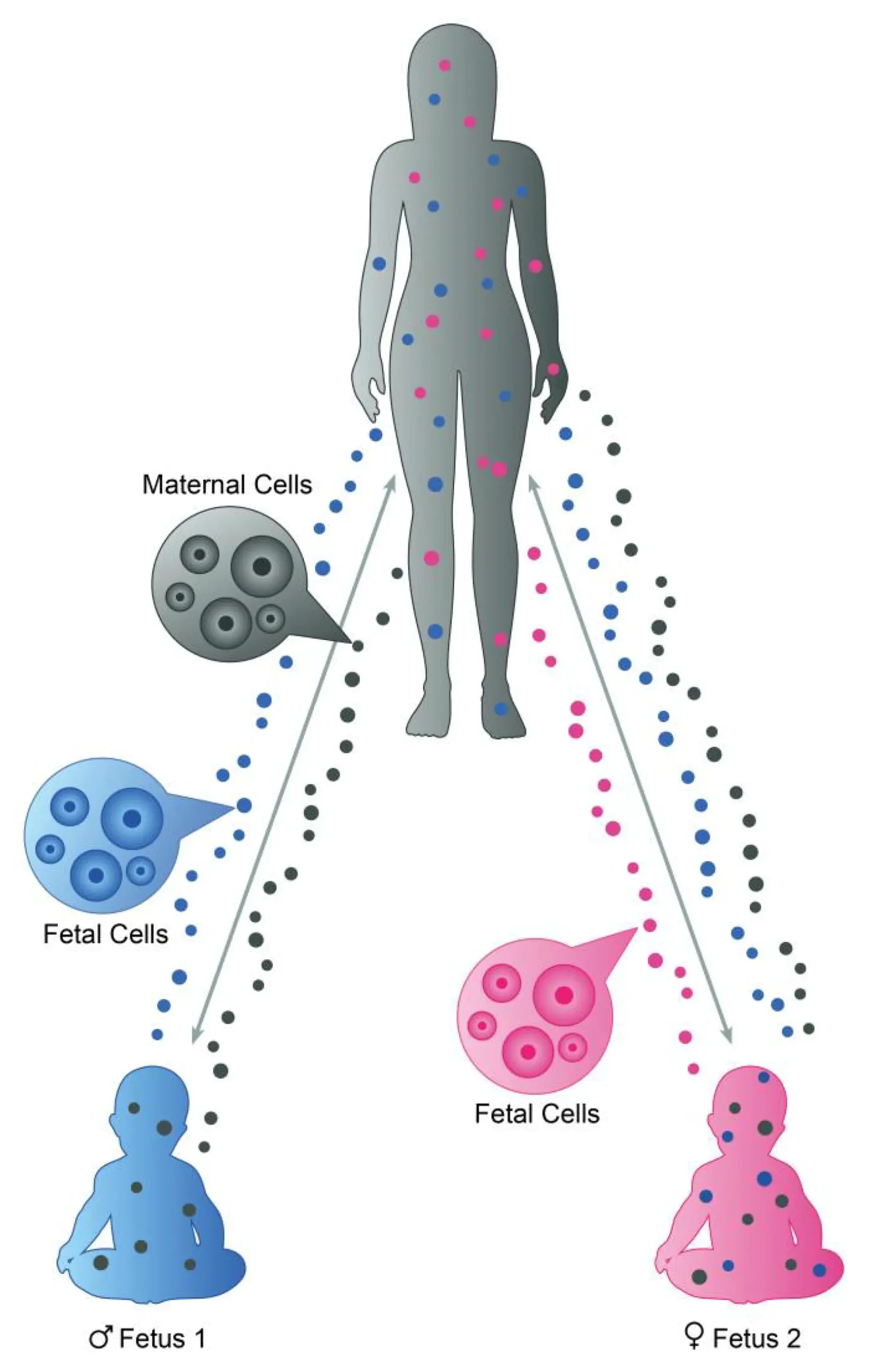
Did You Know? Your Child’s DNA Could Be Living Inside You for Decades!
Have you ever considered how your child’s DNA could still be part of you long after childbirth? Recent research reveals that mothers can carry traces of their children’s cells for years, a phenomenon known as microchimerism. This fascinating biological exchange happens during pregnancy when fetal cells cross the placenta and integrate into the mother’s body, influencing health in surprising ways.
Microchimerism, derived from the Greek term for a creature made of different animals, involves a small presence of another’s DNA within an individual. During pregnancy, some cells from the fetus migrate into the mother’s bloodstream, where they can persist for decades. This process allows mothers to carry genetic material from each child, significantly altering their biology and health long after pregnancy.
The evolutionary origins of microchimerism suggest a symbiotic relationship between mother and child. According to Dr. Amy Boddy, this phenomenon is likely a biological strategy where the fetus maximizes its resource absorption while the mother safeguards her own health. This complex exchange is believed to have significant implications for women’s health, potentially influencing the risk of developing conditions like cancer and autoimmune diseases, demonstrating how remnants of pregnancy can create lasting changes.
Current research offers intriguing insights into how microchimeric cells may protect against diseases. Preliminary studies suggest that fetal cells could assist in tissue repair and even combat cancer, while simultaneously being found in tumor tissues, prompting questions about their dual roles. Additionally, evidence points to these cells potentially providing long-term immune benefits, helping to shape the child’s immune system as maternal cells pass during pregnancy, a testament to the profound connection between mothers and their children.
For mothers, the concept of carrying their children’s DNA is both a comforting and empowering notion, reinforcing the sentiment that parental bonds extend beyond birth. As microchimerism unveils secrets about maternal health and child development, it underscores the enduring relationship between mothers and their offspring, revealing that the physical manifestation of love and nurture transcends time and biology.
The Fascination of Microchimerism
Microchimerism refers to the presence of a small amount of another individual’s DNA in a person’s body, often seen in mothers harboring their children’s cells after pregnancy.
This unique phenomenon occurs as fetal cells cross the placenta, integrating into the mother’s bloodstream and potentially persisting for decades, according to the NIH.
Dr. Amy Boddy explains that this biological exchange might have evolved to provide adaptive advantages, fostering interdependence between the mother and fetus.
Chimeric Cells and Their Health Implications
Research indicates that these microchimeric cells can influence various health outcomes, including cancer and autoimmune diseases, sparking interest among scientists.
Pregnancy may initiate protective mechanisms in women against certain conditions, potentially linked to the presence of fetal cells in their bodies.
The National Institutes of Health suggests that maternal cells may also enter the child, affecting their immune system and shaping health from an early age.
In conclusion, the stunning reality of microchimerism not only deepens our understanding of the mother-child bond but also opens new avenues for medical research. The possibility that remnants of a child’s DNA linger within a mother can reshape our perspectives on health, immunity, and disease prevention. As scientists continue to explore this fascinating phenomenon, we may find groundbreaking insights into how these microchimeric cells influence our well-being long after birth. It’s a reminder of the profound connections that exist within families, where pieces of our loved ones may always reside within us.
Let us know your thoughts by leaving a comment below!
Don’t forget to share this article with others who may find it helpful.







